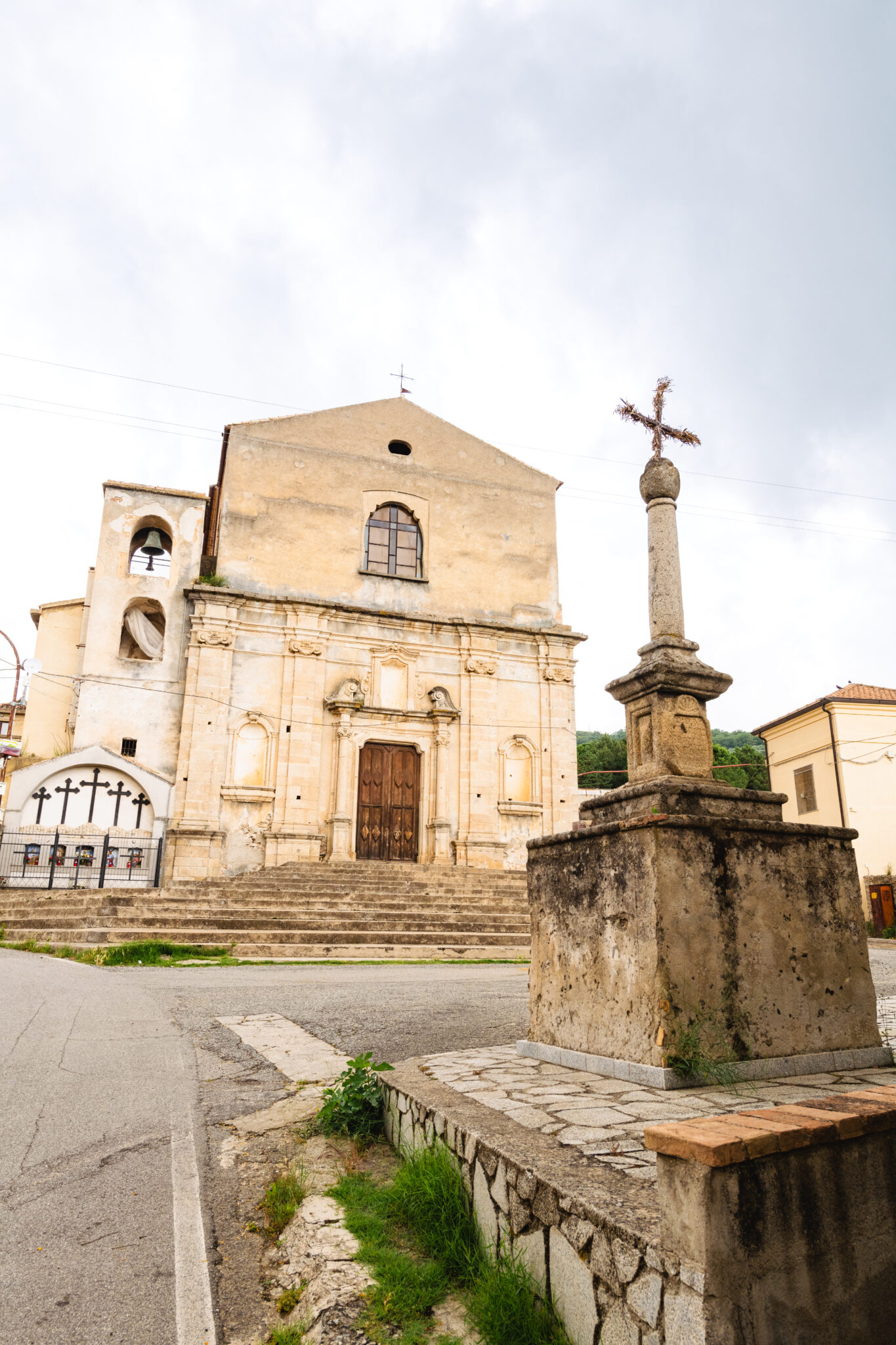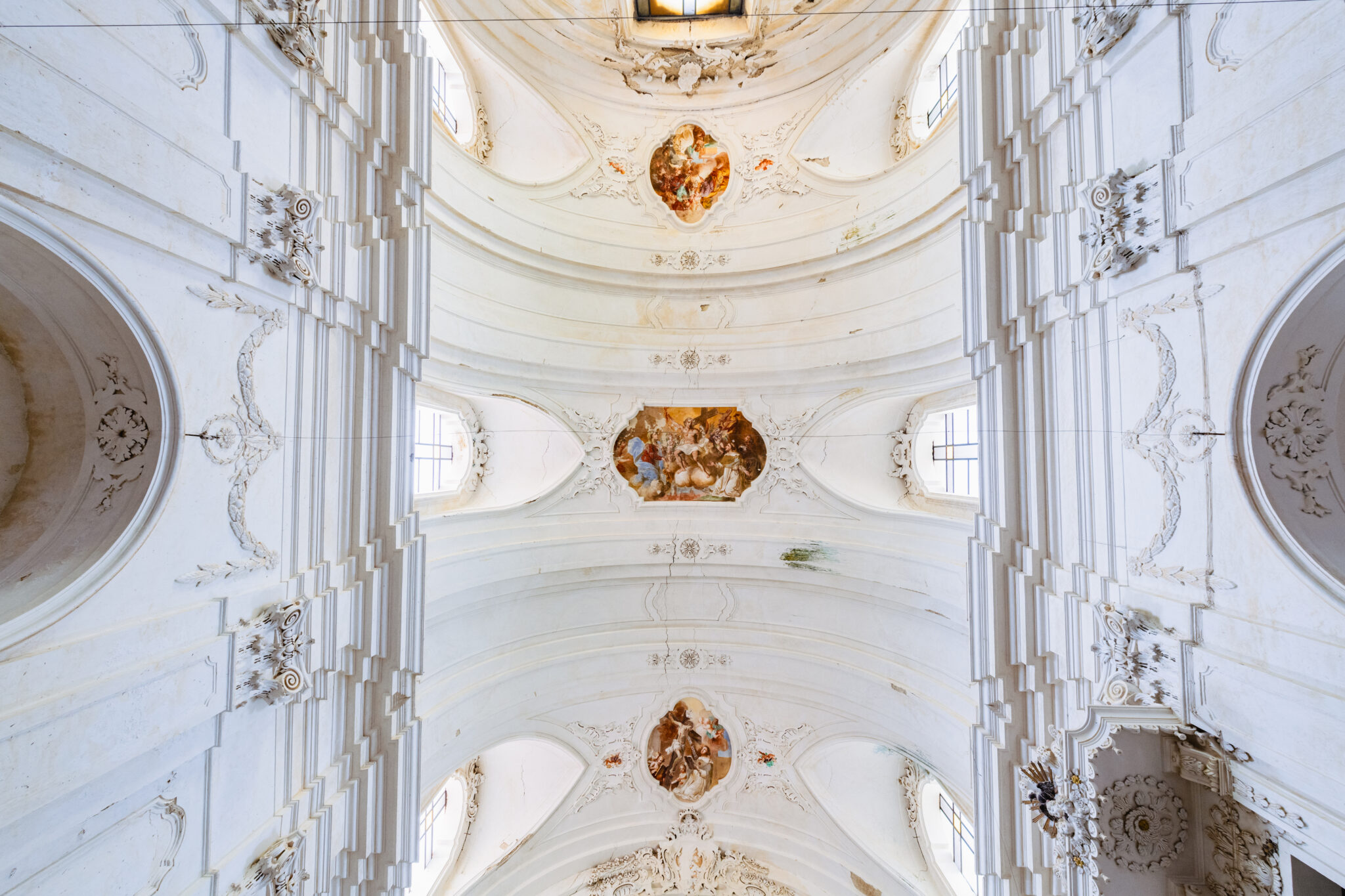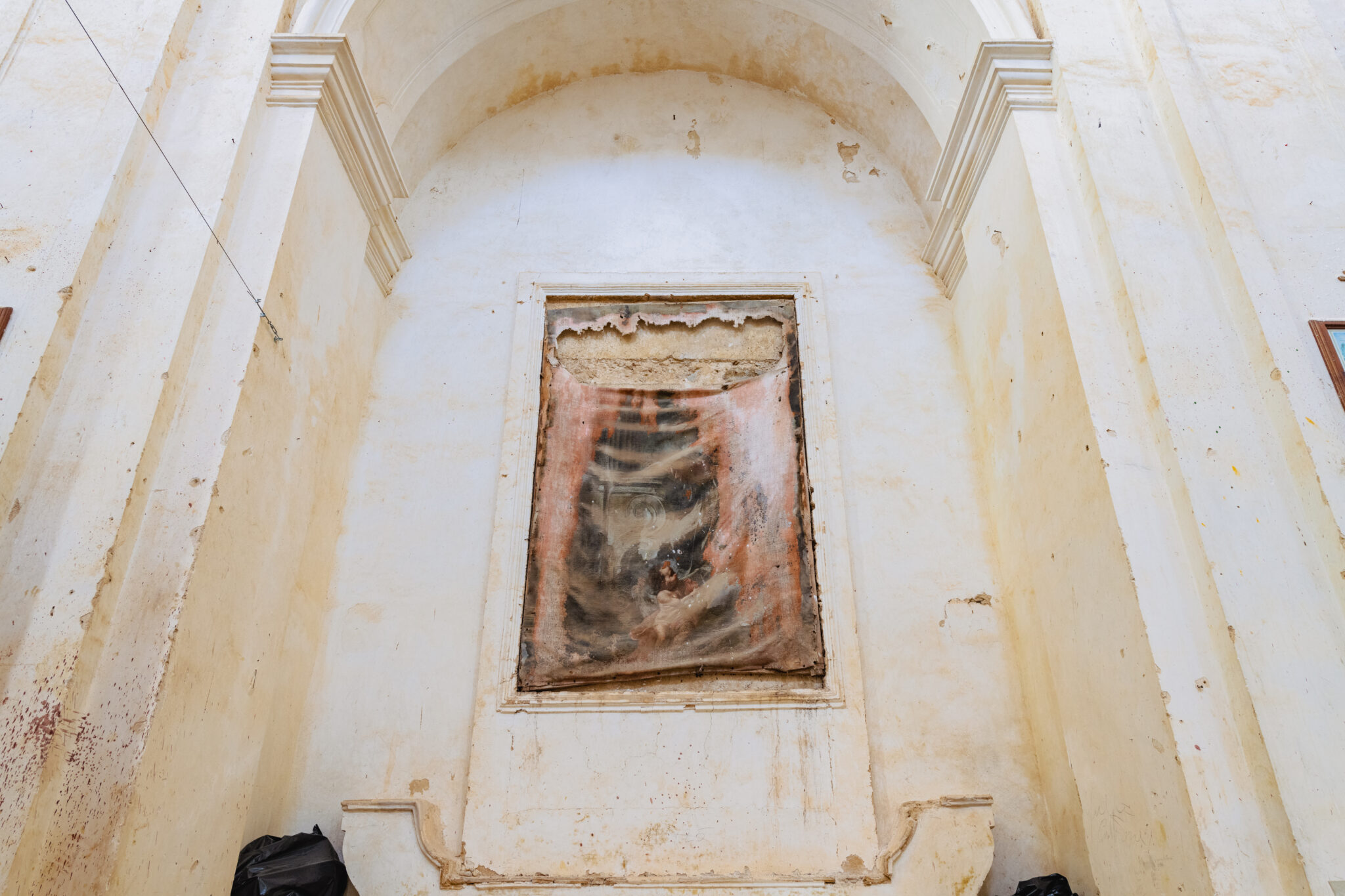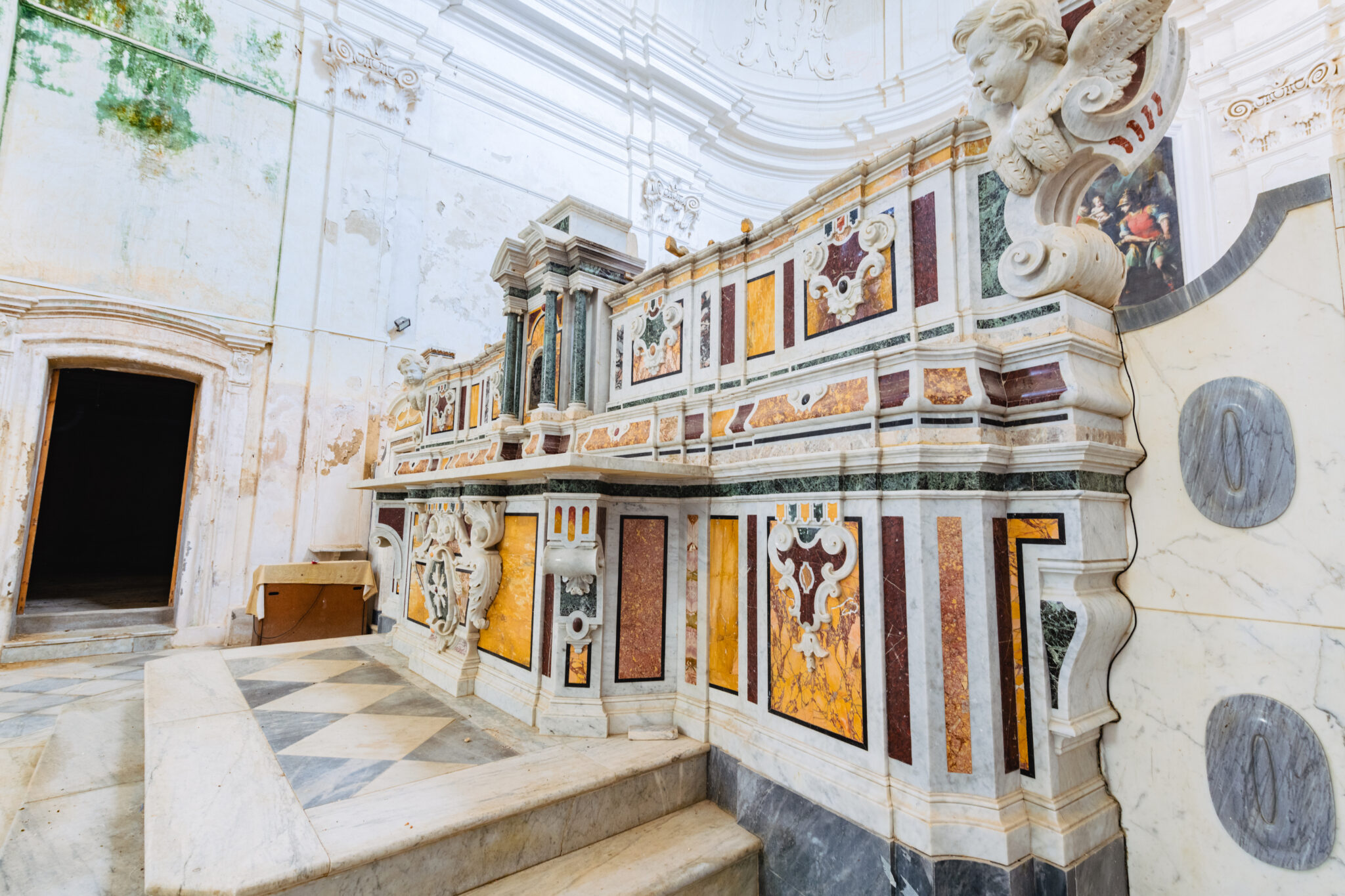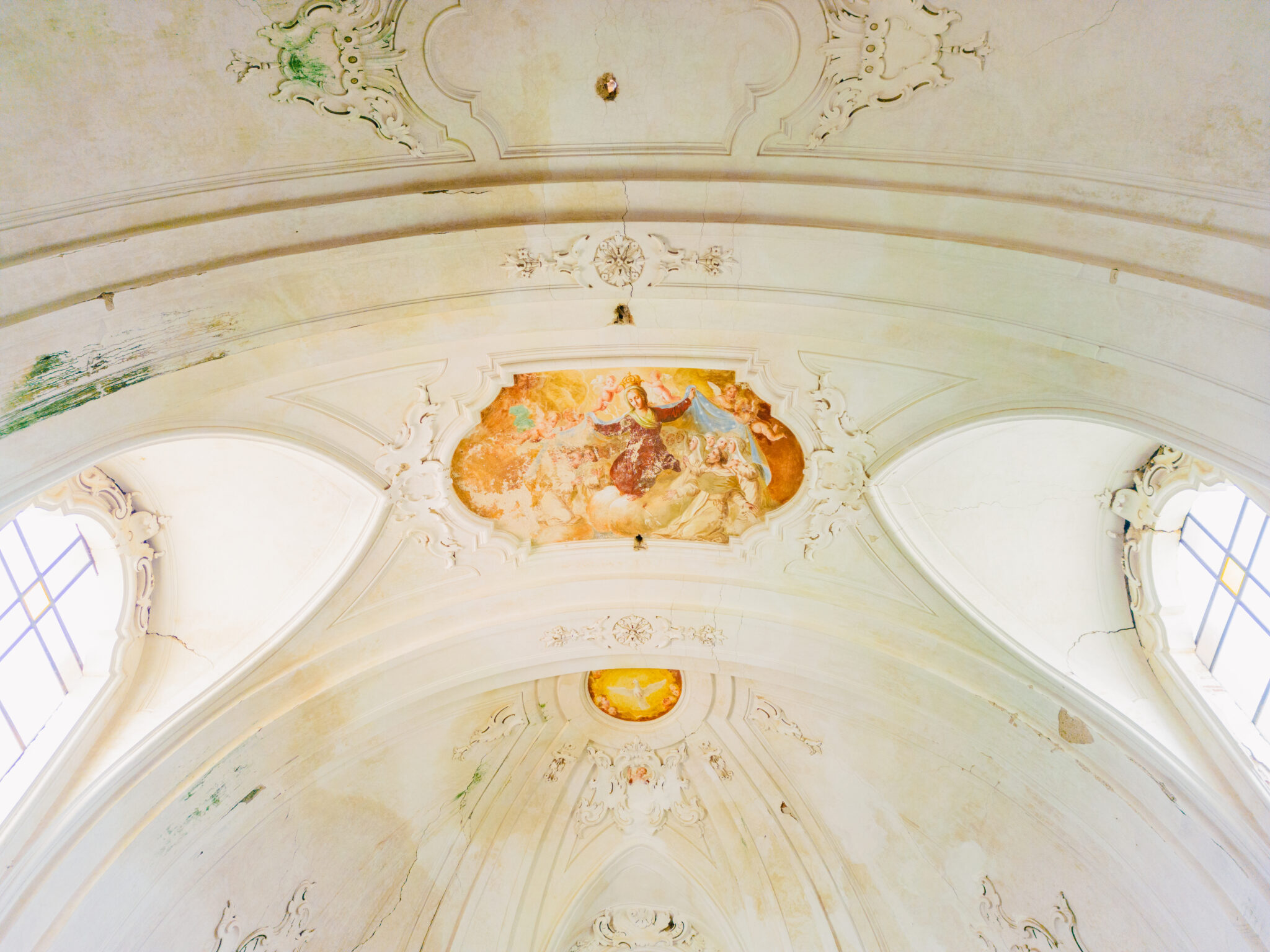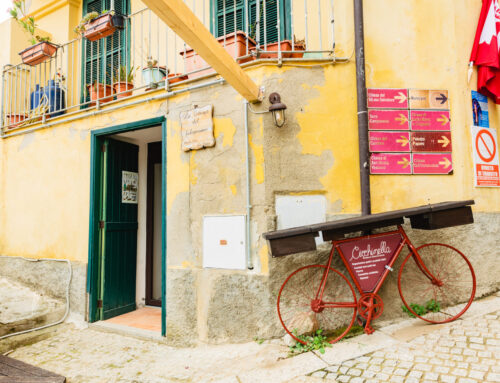The church was part of a Dominican convent whose construction began in 1538. Later, due to the subsidence of the land, it was decided to move it to a nearby but safer area.
Construction took a long time, mainly due to the earthquakes of 1638 and 1783. The monastery, which was prosperous and had a well-stocked library, was closed in 1809 due to the absence of the monks. Over time it fell into ruins and disappeared around the middle of the last century.
Inside the church, in the apse, there is an oil painting on canvas depicting Saint Mary of the Redeemer protecting a child from Satan. The painting, restored a few years ago at the expense of a private family from Badolato, is attributed to the painter Francesco Cozza from Stilo (18th century). However, it is more likely to be the work of Francesco Colella, a painter from Nicastro who lived in the same period as Cozza.
The frescoes on the vault are attributed to the Flemish painter Guglielmo Borremans (around 1730). The pulpit and all the other stuccos, in Baroque style, are attributed to the Calabrian artist Frangipane and date from the same period.
The high altar dates from 1876. The painting of Our Lady of the Rosary with Saints Dominic and Catherine, by Colloca, is also noteworthy, as is the wooden statue of the Risen Christ, which is carried every Easter Sunday during the annual meeting of the Risen Jesus with his Mother, known as the Cumprùnta. Also worthy of mention are the extensive frescoes in the sacristy, which are interesting but little known.
Every year the members of the Confraternity of the Most Holy Rosary, who are in charge of the church, create a large nativity scene with statuettes from the 18th century Neapolitan school.
During this period, the church is closed for worship and is not open to visitors due to important ongoing work to repair the roof, which has deteriorated from centuries of neglect.




